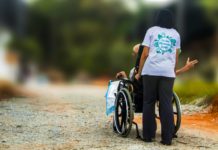
Number of miscarriages, number of reproductive years also have association with dementia risk
The number of kids a woman has, her age at first menstruation and at menopause, the number of miscarriages she suffers during her life time, all of these could affect her risk of developing dementia.
Research reported at the Alzheimer’s Association International Conference (AAIC) 2018 in Chicago highlighted sex differences associated with dementia and Alzheimer’s disease. The results of the first ever large-scale study of reproductive history and dementia risk in women.
New results reported at AAIC 2018 suggest:
- Associations between dementia risk and number of children, number of miscarriages, age at first menstrual period, and reproductive period (years between first menstrual period and menopause).
- In a separate study, a correlation was detected between cumulative months of pregnancy and Alzheimer’s risk.
- Re-thinking the long held thought that hormone therapy negatively affects cognition.
- A need for sex-based standards for cognitive assessments, to improve early detection in women.
“More women than men have Alzheimer’s disease or other dementias; almost two-thirds of Americans with Alzheimer’s are women,” said Maria Carrillo, PhD, Alzheimer’s Association Chief Science Officer. In India an estimated 4 million people suffer from dementia. The number, experts fear, could double by 2030.
Women with three or more children had a 12 percent lower risk of dementia compared to women with one child. Each miscarriage was associated with a 9 percent increased risk of dementia
There are a number of potential biological and social reasons why more women than men have Alzheimer’s or other dementias. The prevailing view has been that women live longer than men on average, and older age is the greatest risk factor for Alzheimer’s. However, some research suggests that the risk for developing Alzheimer’s could be greater for women due to biological or genetic variations, or even different life experiences, such as education, occupation or rates of heart disease.
The first-ever large-scale epidemiological investigation in the U.S. of various aspects of reproductive history and dementia risk, Paola Gilsanz, ScD, staff scientist, Kaiser Permanente Northern California Division of Research in Oakland, Calif.; Rachel Whitmer PhD, Professor at UC Davis; and colleagues found a correlation between risk of dementia and the number of children, number of miscarriages, age at the time of first menstrual period, age at natural menopause, and reproductive period (the number of years between first menstrual period and menopause). Self-reported data from 14,595 women between the ages of 40-55 in 1964-1973 were evaluated.
“Possible causes of dementia in women, in particular reproductive factors, are not well understood,” said Gilsanz. “In our study, we aimed to identify female-specific risks and protective factors impacting brain health, which is critical to diminishing the disproportionate burden of dementia experienced by women.”
The researchers found that women in the study with three or more children had a 12 percent lower risk of dementia compared to women with one child. These women continued to be at lower risk of dementia after adjusting for additional mid- and late-life risk factors, such as body mass index and stroke history.
The researchers also asked about miscarriage and menstrual history. They found that each additional report of a miscarriage was associated with a 9 percent increased risk of dementia, compared to those women who reported no miscarriages. On average, women were 13 when they had their first menstrual period and were 47 at natural menopause. Additionally, women who indicated having their first menstrual period at age 16 or older were at 31 percent greater risk than those who reported having their first menstrual period at 13. Compared to women who experience natural menopause after age 45, those who experience natural menopause at 45 or younger were at 28% greater dementia risk adjusting for demographics.










